Posts Tagged lawn care
Xeriscaping in Santa Rosa
Xeriscaping is a form of landscaping that involves the judicious use of water and plants that adapt to changes in climate. This kind of landscaping needs meticulous monitoring because the weather may not be favorable for most plants. Xeriscaping is almost incomplete without exploring the best plants that can withstand harsh weather and little water supply.
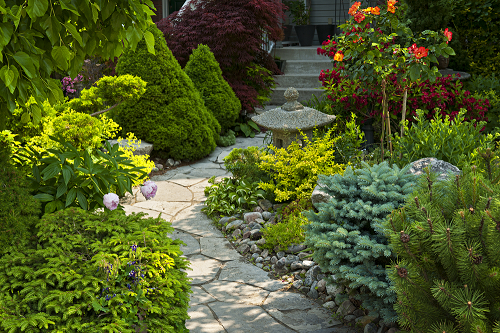
There are seven ideologies of xeriscaping that gardeners and lawn experts have to key into before working on the project.
1) The planning and design which includes mapping out how the lawn will look.
2) Ideally designed irrigation system
3) Mulching
4) Preparation of the soil
5) Substitute for Turfs
6) The exploitation of water-saving foliage
7) Ideal garden maintenance
In Santa Rosa, landscaping companies have explored and discovered that several indigenous plants can be suitable for xeriscaping. Indigenous plants make the garden more appealing to the eyes and also creates a natural home for insects, birds, and other magnificent creatures. Santa Rosa water agency supplies water to the locals from a well-filtered river flowing from Russia. However, the supply capacity may not be adequate as the water agency delivers to over 53 thousand residents. Last year, state law enforced a constraint on the usage of water for commercial and household purposes. These encumbrances prompted the grave need for water conservation.
Xeriscaping is an ideal way of boycotting the search for water before lawn beautification. Some xeriscape-friendly plants naturally save water in their stems. A suitable sample is cactus plants. This plant can endure adverse weather for many years without water because it opens its stomata at night, unlike other plants. It utilizes the stomata to ingest carbon dioxide into its system in a bid to generate food the next day. It is known as transpiration. Cacti have spines on their body; hence, xeriscapers may have a second thought about whether to plant it or not. However, there are analogous families of plants in Santa Rosa that habituate to dry conditions such as Deer grass, Coast Rosemary, Bear’s Breech, Wisteria, etc.
Another benefit of this gardening culture is that you do not need to waste your hard-earned money on pest control systems or tools. You can also disregard the need for fertilizers because drought-resistant plants do not need it.
You will have to pay between $0.6 to $3 per square foot before you can give an exquisite touch to your garden. It solely depends on your projection and the technicality of the setup.
Villa and condo owners can reach out to us for more information on how to add value to properties by xeriscaping. We will work to ensure all needs are met and that projects are completed successfully.
6 Lawn Treatment Tips From The Experts
You’ve created the perfect lawn in your outdoor space. The soil is fertile, and the grass is ideal for your area. But to keep your lawn in peak condition, it needs regular care. The following are six lawn treatment tips recommended by landscaping experts.
- Mowing
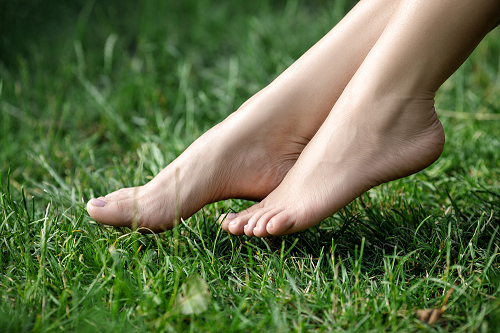
What’s the perfect length for lawn grass? That depends on your preference. However, for easy maintenance, you should not allow the grass to grow more than 10 cm.
Experts recommend trimming only one-third of the grass’s length. Cutting the grass too short increases the chances of drying, weed infestation, and disease.
- Edging
A neat lawn has well-defined edges. Use a sharp pair of shears to stop grass from growing over your borders. Edging not only promotes neatness but also gives your lawn a satisfying finish.
If possible, install permanent edging – a border that grass cannot grow over or cross.
- Watering
Inadequate watering causes the grass to change color. Besides, well-watered grass has a spring; it doesn’t remain flat after walking on it.
How much and often you need to water your lawn is dependent on the weather. Remember, overwatering is just as bad as underwatering. Soggy soil discourages healthy growth of roots.
For best results, water your lawn early in the morning.
- Feeding
Want a greener, healthier lawn? Feed the grass.
Nitrogen is particularly essential for vibrant and green grass. A soil test will help you determine the amount of nitrogen your lawn needs. Other essential nutrients include phosphate and potash.
The typical lawn requires feeding twice a year. In the spring, apply a nitrogen-rich fertilizer. In fall, it is advisable to feed your grass with high levels of potash and phosphate.
Whichever lawn feed you choose, strictly follow the guidelines on the package.
- Weeding
Weeds prevent the healthy growth of grass. The best method of weeding is uprooting – pulling the weed together with the roots. You can weed manually or using a tool. But in cases of severe weed infestation, you might need to use a low-toxicity herbicide.
- Removing thatch
Thatch refers to the organic matter, made up of dead leaves, grass, and stems, that forms a layer above the soil. The buildup of thatch prevents water and other nutrients from penetrating the soil.
Methods of removing thatch include raking and scarification. You can find a good rake or scarifier at your local gardening store.
Keep your lawn lush, green, and healthy using the lawn treatment tips shared above.
Strategies for Getting Your Lawn Ready for Cooler Weather Ahead
Although the month of August is in what people call the dog days of summer, you have to realize that the first frost is right around the corner. The season’s first frost might well come at the end of August or early September.
When the first frost of the season hits, most of your annual plants will wilt and perennials will be sent into their dormant phase for the hardier winter months ahead.
While these effects can’t be avoided, there are a lot of steps that you can take to fortify your lawn for winter.

Keep Up Irrigation
Your lawn has a kind of wisdom all its own. In the fall, the grass will stop putting so much energy into growing new blades and put those resources into creating a resilient root system to survive the coolet months ahead.
The thing to realize is that you have the chance to significantly strengthen your grass’s root system by watering your lawn right now. Xeriscape is a landscaping and irrigation company that can give your yard the nourishment that it needs.
Your lawn will naturally grow less bounteously in the late summer and early fall. That said, your lawn will still benefit from giving it the three main ingredients that it needs to grow – nitrogen, potassium, and phosphorous. Xeriscape can help here as well.
Repair and Weed
There’s an expression that when you fail to prepare you actually prepare to fail. That might sound harsh but what’s undoubtedly true is that homeowners who have an eye towards the future usually have the best yards.
Think of late summer and early fall as your opportunity to create a lush landscape for spring next year. Xeriscape can help you fill in bald patches, or you could look into a grass repair kit that includes seed, fertilizer, and mulch.
After you’ve done the real heavy lifting by repairing bald spots, you might want to look into uprooting weeds so that everything can grow to its full potential.
The thing to bear in mind is that weeds can fortify themselves and regrow with renewed vigor in early spring next year if they’re not dealt with soon.
Rake Up Leaves
A lot of people are loathe to rake up their leaves because they have such a beautiful appearance in your yard.
That’s true – a defoliating maple tree, for instance, can be breathtaking….and, at the same time, be ruining your yard and actually jeopardizing your health!
Lawns have to breathe in the sense that leaves that are allowed to linger on your lawn will prevent sunlight and air from getting to your lawn, which will cause your grass to be less healthy than it otherwise would be had you raked right away.
Leaves also decompose very slowly so that, if you don’t rake leaves in the fall, you’ll have a layer of basically intact leaves over your yard all winter. Snow mold and brown patch are both serious possibilities if leaves are allowed to linger all winter.
Fungal infections and health problems could also crop up if you don’t rake away leaves. Xeriscape can help with all kinds of landscaping, including getting leaves off the property. Leaves that get matted now could prevent fresh grass from growing in the spring.
Use Leaves to Compost
All of those leaves that you’ll eventually rake up can be put towards composting in the spring. You might want to consider putting fallen leaves in a compost bin and allowing decomposition throughout the winter. Turn the compost over regularly to have consistent temperatures, or simply rely on Xeriscape for your lawn care needs! Contact us for more information.
Lawn Maintenance: The Importance of Lawn Treatments
If you love your lawn (which we are sure you do), then you know the importance of lawn care and that it goes beyond watering and mowing. Yes, these two are the foundation for a healthy lawn, but lawn maintenance is a complex science, involving feeding, aeration, and controlling insects and weeds.
Benefits of Lawn Treatment

Proper lawn care ensures that your lawn can withstand threats from lawn-damaging weeds and insects. It also ascertains that your flowers, grass, and shrubs can fight-off diseases. Furthermore, lawn care ensures your turf can survive unpredictable weather and guarantees your lawn is ever nutrient rich.
However, seeing as it is time-consuming and a difficult undertaking, we recommend you engage professionals. Here are five benefits of hiring experts.
- Expertise
You might be a proficient landscaper, but there is knowledge and services only professionals can provide. They understand the shrubs and trees better and know the different grass varieties. They can often tell what is ailing your greenery in an instant and prescribe the best treatment program. Moreover, seeing as they understand the local climate, and have years of experience, they will engage in preventive measures to ensure your lawn can ward off seasonal pests and diseases.
- Avoid Accidental Damage
64% of American believe that all grass should be fertilized during spring while another 57% believe a lawn is not healthy if it is not green. These are false believes that lead to damage by over-fertilizing and leading to a high accumulation of salts in the soil.
Lawn treatment services, on the other hand, avoid common mistakes know how to treat your plants.
- Cost Effective
It might sound counterintuitive, but engaging professionals is cost-effective. Think about it; you will have to invest in equipment such as mowers, aerators, and brush cutters, invest in chemicals, and fertilizers. Furthermore, given that there is a period of trial and error, there is a high likelihood that you will be paying to correct mistakes.
However, with professionals, you will not pay to correct mistakes, and you don’t have to invest in the equipment and chemicals.
- Property Value
If you are considering putting your house on the market, you can increase its value by proper lawn treatment. Lawn maintenance can increase the value of your property by up to 15%. Who wouldn’t like that?
Hiring lawn care experts is the only indisputable way to ensure that your lawn is always in pristine condition.
- Consistency
As a homeowner, there is a likelihood that work, plus maintaining your lawn can be overwhelming. It will be challenging to create let alone observe an effective lawn care routine.
However, lawn maintenance experts ensure that your greenery, is trimmed, fed, and watered consistently. They also handle far more, and the result is a healthy lawn, and one that you can enjoy.
Conclusion
Though it is a demanding task, lawn treatment is of utmost importance. It improves air quality while maintaining the aesthetics of your home. Engaging the services of a professional ensures that your lawn is ever impeccable, it saves you money, and keeps you from physical labor. You can contact us for all your lawn maintenance, repair, and landscape design needs.
Tips for Choosing Landscaping Shrubs
Shrubbery plays a great role of defining the visual space of your front yard and also guiding visitors to your doorstep. Since they come in variety in terms of color, shape, and size, the task is to pick shrubs that match your needs. The variety also gives you the freedom to ensure that your yard is as appealing as it can be. Consider the following tips when picking the right plants for your landscape.
Size of the shrubs

When it comes to choosing size, you need to be thorough. The secret here is to choose the ones that complement other trees and flowers in the landscape. Proximity to other plants is also a factor to consider. Their placement in the garden should be such that it is easy to care for them as well as other flowers and trees.
Where to plant and why
In most cases, the function of the bush determines where you should plant. As you may know, shrubs have different types of shrubs have different functionalities and hence you need to consider this before making a choice. For instance, long bushes are most suitable planted near the home as they will help control the climate during summer and winter. On the other hand, if you have a sloppy area that is susceptible to soil erosion, you should go for low growing plants. These will spread fast and within a few years you will have the slope completely covered.
Their closeness to other plants
Some bushes tend to grow tall and can shade other landscape plants from getting enough sunlight based on where they are planted. If you want them to be close to other plants, then you should consider planting the larger ones should fall on the northeast side. If you feel that the shrubs will interfere with the sun exposure to other plants, then the smaller ones are most suitable.
Color choice
Shrubs come in different colors and there is a color for each season. Since adding color to your landscape is one of the major reasons for having a shrubbery, you need to be keen when choosing the right colors. There are a variety of green shades to choose from, which help add interest to your landscape. The flowers is also another factor to consider when it comes to choosing the right bushes. Some common colors available include white, red, and blue. You can plant each color in between. There are also some plants that produce colorful berries which is a plus since they can feed birds in your garden.
Growing conditions
It is always wise to think about suitable climatic conditions for a particular plant before planting it. If you are in the south or southeast where the climate is a bit hot, you need to go for drought resistant shrubs. If you are in the north or northeast, consider cold resistant bushes. Another factor to consider in this category is the salinity. If you live near the beach where salt level are a bit high, choose plants that can withstand the condition.
When choosing shrubs for your landscape, always make sure you choose the ones that complements you yard in terms of color and size. The period the plant will last in your yard should also influence your choice. Contact us for more information.
Determining the Right Time to Mulch
DLaying mulch not only improves the appearance of your landscape but it also has several other benefits. It minimizes weed growth and helps moisture retention, hence making your plants stay strong and healthy. It also acts as a good insulator thus regulating temperatures depending on the season. You can also curb soil erosion and plant damage during mowing through mulching. As mulching material decay, it adds nutrients to the soil.
Right mulching time
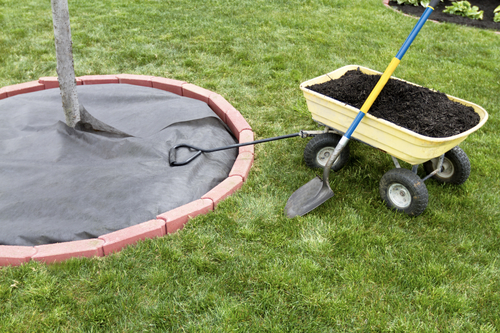
Knowing the right time to mulch will help you enjoy all the benefits that comes with the exercise. Many people have the tendency of mulching as soon as the spring sets since it’s one way to improve the appearance of the landscape. However, mulching as soon as the warm season starts is not advisable. You need to give the soil some time to acquire warmth, hence making mid-to late spring the right mulching time. If you had laid winter mulch, pull it off gradually to help the plants adapt to the warmth. Pulling it all at one can subject the plants to late-season cold.
How much mulch should you lay?
It is advisable you start by laying a thin layer of mulching material so as to give your seedlings the space to grow. As the plants get established, you can increase mulching material accordingly. You should put more mulch during summer to help retain soil moisture and provide insulation from cold during winter.
Determining the right amount of mulching material can be tricky. This is because you don’t want to lay too little material that you leave the plants exposed or too much that it kills the plants. You can determine the right amount depending on the type of mulching material you want to use. If you are using a fine material, then 1 to 2 inch layer should be fine, when 3 to 4 inch should be fine when laying coarse material. If your intentions are to prevent anything from growing in an area, then you can lay as much material as you want.
Laying too much mulching material results in the plant roots growing with the material hence a shallow rooting system. This makes your plants susceptible to damage by drought and cold weather. You can avoid this by putting a moderate layer depending on the type of your crops. When mulching an area with trees, you need to leave a space between the tree trunks and stem so as to prevent them from rotting. Leaving space also ensures that pests such as slugs and mice don’t get a habitat or destroy your plants.
When putting mulch, you need to put in consideration the style of the area. For instance, if it is the pathway, a windy area, or a slope hence susceptible to erosion, you should put heavy mulching materials. The size of the mulching material should also help you determine the depth of the layer. If you are using big chunks, then the layer should be deep, but if you are using small material, then the layer should be shallow. Contact us for more information.
Improve the Appeal with these Simple Lawn Treatment Tips
Every homeowner dreams of a perfect lawn. Unfortunately, only a few yards in residential areas are green, lush and healthy. This can be attributed to the lack of adequate care. In simple terms, if you do not put some time and effort into protecting, preserving and enriching your lawn, you will not get beautiful and thriving turf. Under ideal circumstances, you should engage a professional for yard maintenance. If you are set on DIY upkeep, use these simple lawn treatment tips for better results.
Check Your Mower Settings
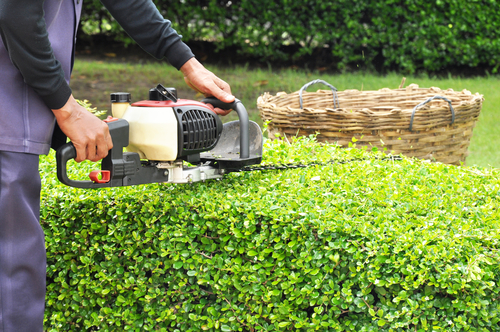
If your grass is growing healthily but the effect after mowing is not stunning, it is advisable to consider the lawn mower settings. Setting the blades to cut the grass to short can be highly detrimental to the beauty of the yard. You should note that different species of grass have optimal cutting heights. Consult your landscaping expert on the best length for your grass. Otherwise, you will have to deal with bald patches, poor root systems and even drying plants. When mowing, ensure that the mower blades are sharp, and alternate the cutting patterns for long-term lawn appeal.
Water at the Right Time
Watering your grass is an essential practice for a healthy lawn. Unfortunately, irrigating the plants at the wrong time can cause unexpected harm. For instance, if you water the grass in the evening, the moisture will remain on the blades for a prolonged period. This can promote the growth of harmful fungi on your property. On the other hand, watering when the sun is blazing prevents optimal absorption due to evaporation. Therefore, you should irrigate during early mornings for maximum absorption without the moisture overload.
Rake the Fallen Leaves
Raking the lawn is not fun for most people. However, if you want to keep your yard and grass in the best condition, this practice is necessary. When dead leaves are left on the lawn for too long, they will suffocate the grass and prevent the penetration of sunlight. Consequently, the grass will no longer have the lush green look. In addition, leaves promote moisture retention, and this will increase the risk of fungi attack. So, plan for the timely removal of dead leaves to protect your lawn.
Deal with Bald Spots
Bald spots can develop on the lawn due to unexpected problems. For instance, if you have not upheld the best mowing practices, some areas of the yard will look a little bare. Also, poor soil aeration and smothering of grass by objects can cause bald patches. It is important to deal with these spots to restore the beauty of the lawn. The most convenient method for dealing with bald patches is filling in with a repair mixture. Typically, the repair material consists of suitable grass seeds, special fertilizer and in most cases, some organic mulch.
Finally, you should preserve the beauty of your lawn by controlling weeds. These unwanted plants will take away the nutrients intended for your plants. As a result, the grass will not grow healthier over time. Also, weeds are unappealing and will compromise the harmony of the turf. Therefore, you should plan for immediate weed removal if you notice any signs of invasion. Contact us for more information.
Irrigation 101: The Importance of a Good Sprinkler System Design
A good sprinkler system is one that satisfies your home’s landscape watering requirements, letting it flourish beautifully while saving large amounts of water and money. The benefits of investing in professional sprinkler system design are numerous:
- You no longer need to worry about watering at the proper times.
- Plants, tree, and ground covers get the right amount of water.
- Over and underwatering is virtually eliminated.
- A healthier landscape improves your home’s value.
Every sprinkler system we design is done with the xeriscape principles of promoting water conservation and reducing the need for regular maintenance in mind.
Plot and plan the perfect sprinkler system design
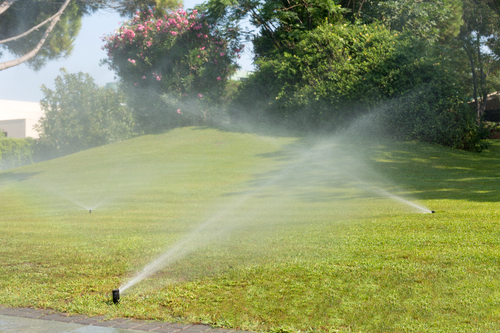
There’s a lot that goes into designing a good sprinkler system. Flow, working pressure, pipe sizing, water velocity, and friction loss must all be taken into consideration. There’s also valves, timers, and irrigation heads to think about. Add it all up, and it’s easy to see why having a pro handle it is a great idea!
Here’s a brief rundown on how a typical sprinkler system design plan comes together.
Measure and design
The first step in any sprinkler system design is measuring the property then plotting where fixed elements like your home, the driveway, paths, fences, patios, and decks are located. Next, current and future lawns, shrubs, ground covers, trees, and other plantings are added to the drawing. The landscape is then divided into areas such as front yard, back yard, side yard, shrub areas, lawn areas, and so on.
System design capacity
It’s not as complicated as it sounds. To design an automatic sprinkler system, you need to know how much water is available to irrigate your landscape. Most systems are designed to use water supplied by the city or township, but some people draw their water from wells or lakes. Determining capacity involves measuring water pressure (PSI) and water volume (GPM) then using those figures to make sure the most efficient watering system is put in place.
Product selection
Sprinkler heads and valves are two of the most important components. There two broad types of sprinkler heads:
- Rotating stream spray sprinklers that operate by rotating streams of water back and forth or in circles over the landscape.
- Small area fixed spray sprinklers that spray a fan-shaped pattern of water over a fixed radius.
Many homeowners also include a drip system in their sprinkler systems and most designs include a combination of all three types. Which ones are placed in which locations depends on water pressure, space, and area shapes like curved pathways or raised beds.
We’re sometimes asked if one system is less expensive than the other. In our experience, it tends to work out the same. Rotor heads require less pipe and trenches, but the rotors themselves cost more. Spray heads may be less expensive, but they need more pipe, trenches, and valves.
Whichever design you select, the sprinklers are then divided and placed into zones that are irrigated at different times of the day, taking into consideration things like sun exposure, plant types, and watering needs.
Create the perfect xeriscape sprinkler system
A well-designed sprinkler system design is sure to improve the health, appearance, and value of your landscape. If you’d like to learn more about our sprinkler system design services, contact us online or give us a call at 707.280.3632. Our professional team sprinkler design team is ready to give you the cost-effective, efficient, and long-term landscaping irrigation solution you’ve always wanted.
Lawn Treatment Tips
Proper maintenance of your lawn is crucial for a perfect residential landscape. If the right upkeep practices are not upheld, the lawn will deteriorate. Invasive weeds will grow on the land, the plants will lose their lushness and the grass might begin to wither. On the other hand, if you make time for lawn care, you will preserve the natural appeal of your yard. Here are simple lawn treatment tips to help you keep your residential landscape beautiful and healthy.
Aerate the Lawn Soil
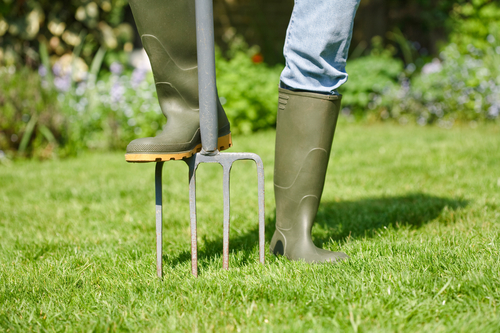
Compacted soil does not support the efficient growth of grass. If the ground is too compact, the roots of the grass will not grow deep. Moreover, water, air and nutrients will not be mobile and readily available in the soil. Fortunately, you can relieve compaction and aerate the lawn soil by creating holes in the ground at intervals. There are specialized tools for aeration, but a simple garden fork will also be effective. You will only need to push the prongs into the ground at short intervals.
Apply Suitable Fertilizer
Feeding the lawn with fertilizer can improve the appearance and health of the grass. The treatment will provide the nutrients which might be absent from the soil. If your landscape is large, it is advisable to acquire specialized equipment for nutrients feeding. However, if the lawn is relatively small, you can manually apply the fertilizer to the grass. Ideally, the material should be used during the rainy season. Fertilizer will burn the grass if it stays on the blades. If it does not rain, you should irrigate the yard thoroughly to allow the nutrients to sink to the soil.
Plan on Over-seeding
Over-seeding is a beneficial practice for old and tired lawns. It is advisable to consider this process if your lawn is showing signs of thinning out, or there are bare patches on the land. In general, over-seeding involves covering the entire loan with a mixture of grass seeds and fertilizer. When these seeds grow, they will fill in the gaps between the thinning areas of the lawn, creating a lush and uniform landscape. If you decide to carry out this process, remember to keep the lawn moist to facilitate germination.
Mow the Lawn Correctly
Mowing is an important part of keeping your lawn in good condition. However, if you do not perform this maintenance process correctly, you could cause more harm to your landscape. Where possible, it is prudent to have your grass mowed by a skilled professional. If you must handle the work, you must remember to only cut about a third of the total grass length. Cutting more will compromise the growth of the grass. You must also avoid mowing wet grass because moisture causes clumping. Mowing the lawn in this condition increases the risk of patching.
Going Beyond Lawn Treatment Tips
Maintaining a beautiful landscape is not only as simple as upholding simple lawn treatment tips. The best upkeep and care practices require effort, time, skill and experience. Therefore, if you are interested in improving your residential lawn for long-term health and aesthetics, consider consulting our experts at DK Landscaping Inc. Whether you need mowing and edging or fertilization and weed management, you will receive the best services for a beautiful home.
![]()
Ways To Master Your Summer Lawn Care
Here are the Top 5 tips For Summer Lawn Care that can help you to achieve the best lawn.
- Starting Over – Cleaning Up –
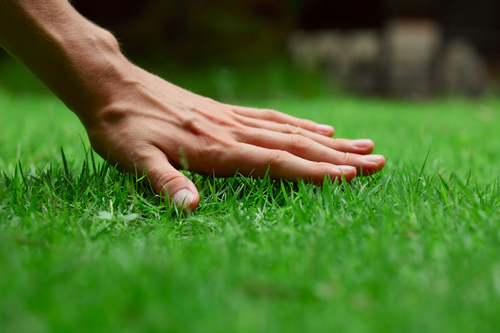
The first thing you should start by doing is walking over your lawn and gather branches, twigs, leaves and any other debris that has accumulated and dispose of. (Or it can be thrown in the compost bin to later be used as mulch)
Cleaning up your lawn area should also include raking up any matted areas of the lawn which can encourage snow mold. Not only does this help to prevent any disease or insect infestation but at the same time it promotes better air flow throughout the turf and allows new grass blades to grow without difficulty.
- Protect Your Interest – Weed Control –
Weeds can definitely be a gardener’s worst nightmare and no matter how you try to get rid of them they keep coming back. Though you may not be able to stop them completely there are things you can do to keep them at bay. Weed control.
As part of your lawn care, it is very important to carry out weed control – applying an effective weed killer whether it be organic or inorganic before temperatures hit 55-60 degrees. If you wait until temperatures reach this point, conducting weed control will be pointless as weed seeds would have already begun to germinate.
- Kick Start Growth – Fertilizing –
Winter really signifies a dormant period for gardens and landscapes as your lawn and other areas tend to go into a slumber, however, fertilizing your lawn and other garden areas in the spring gives it a much-needed jumpstart.
This provides an intensified nutrient build up that will give your lawn and other areas the strength they require to withstand the heat and drought that follow in the summer months.
- Let It Breathe – Core Aeration
Just like weed control, it is important to core aerate lawns in the spring as part of your lawn care, before soil temperatures reach 55-60 degrees since this encourages aggressive weeds to populate void spaces in a lawn. Allowing water and air to reach root zones easily, core aeration is great for lawns and helps gardeners to quickly achieve new growth when they apply this useful tip.
- Repair And Rejuvenate Lawns – Re-Seeding Turf
Nine times out of ten winter will wreck havoc on your lawn and come spring the damage is done. Now what? Well, as long as the weather permits it how about doing some re-seeding?
This is a great technique gardeners can use to restore damaged areas of their lawns, however, it may be a bit tricky if you’re applying a pre-emergent weed control so it must be carefully done.
You see, pre-emergent weed control isn’t selective, meaning it will prevent ANY seed from germinating including those used to reseed your turf.
Usually, it’s recommended to hold off weed control to the latest point possible an to perform the turf repairs needed as early as possible so that the seeds have enough time to germinate and become established before weed killer is applied. If this is not possible, don’t skip your weed control instead wait until fall to perform any turf repairs necessary.
Bonus Tips For Lawn Care
- Mow Turf On A High Setting – You should adjust your mower to cut your lawn grass at the highest possible setting. Most turf types usually thrive better when blade heights are about 3 to 4 inches tall.
- When mowing Zoysia grass and Centipede grass, use the lowest setting. For Bermuda grass and creeping bentgrass, it’s best to remove only a third of the total grass blade length at a time.
- Applying mulch – Mulches help to provide essential nutrients and help with weed prevention and soil stability all season long be sure to apply some where necessary.
Contact the experts here at DK Landscaping – our expert team is on call to come in and assist you with any lawn care or gardening task that you have.
Give us a call at (707) 280-3632 or you can visit our website at dklandscaping.com for more information or book your appointment.





